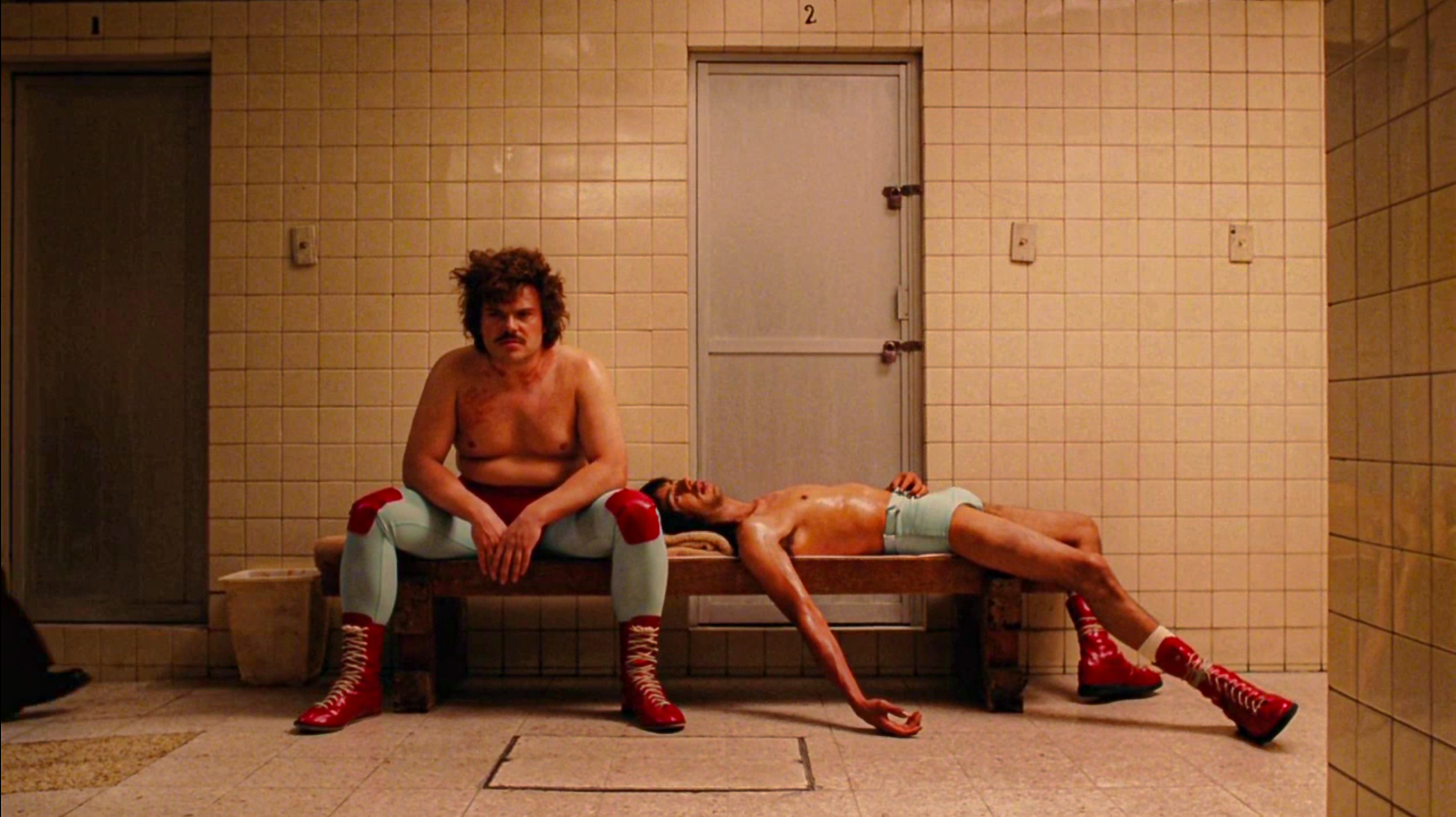Table of Contents Show
Jared Hess made an indie genre splash with Napoleon Dynamite (2004), a film that used its deadpan, off-beat humor to great advantage to tell the story of a nerdy, awkward high schooler trying to navigate rural Idahoan life. Two years later, Nacho Libre (2006) used the same humorous techniques and Wes Anderson-style framing shots throughout, but to little success. The film underperformed with critics, no doubt because of its marketing as a children’s movie instead of an indie sports film. However, in the sixteen years since its initial release, the film’s cult following suggests that the heartwarming story about Nacho, a Catholic friar turned secret luchador to support the orphans in his care, has grown with its audience.
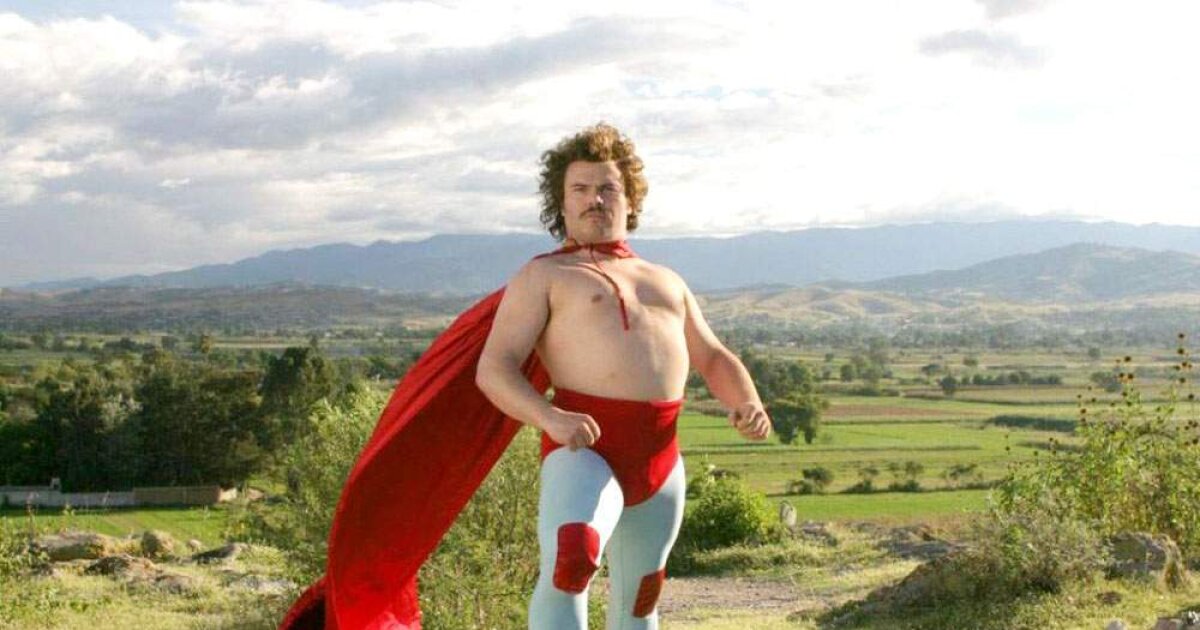
Despite being marketed as a children’s film, Nacho Libre’s indie elements elevate it to a higher cinematic level. Hess borrows Wes Anderson’s filmic style full of bright colors, symmetrical shots, and hyper-stylized scenes in the opening credits and throughout the film, appealing to the juvenile genre but giving the film a sense of maturity found in indie films. The superhero story-telling elements and slapstick physical comedy keep the film lighthearted and down-to-earth, along with its uplifting story of Nacho becoming himself and an inspiration to others.
The story is simultaneously about Nacho’s midlife crisis and children looking for a role model in their community, making it accessible to a range of viewers. Nacho Libre appeals to audiences of all ages and genres because of its ability to balance juvenile humor with an appreciation of cinematography, elevating it from a simple children’s film to a quirky indie cult classic.
Nacho Libre’s Story
Nacho Libre is a fairly straightforward film: is a fairly straightforward film: Brother Ignacio, or Nacho, played by comedy king Jack Black, is an orphan taken in by his local Catholic Church. While he devotes himself to the Church, he feels unfulfilled because of the menial tasks he must perform as the monastery’s cook and errand boy. Nacho longs to fulfill his childhood dream of being a luchador, a wrestler, but the brothers at the parish – and the new teacher, Sister Encarnación — criticize the local luchadores. They think of wrestling as a sin, because of how the luchadores wrestle for vanity and pride. But one night, when the orphan’s chips for their meal are stolen by a local grifter named Steven, Nacho decides to abandon the brothers’ ban on wrestling to win some money and finally buy proper food for the orphans. Impressed by Steven’s fighting skills, Nacho recruits him to be a tag team of luchadores. They change their names to Nacho Libre and Esqueleto so their real identities won’t be discovered.
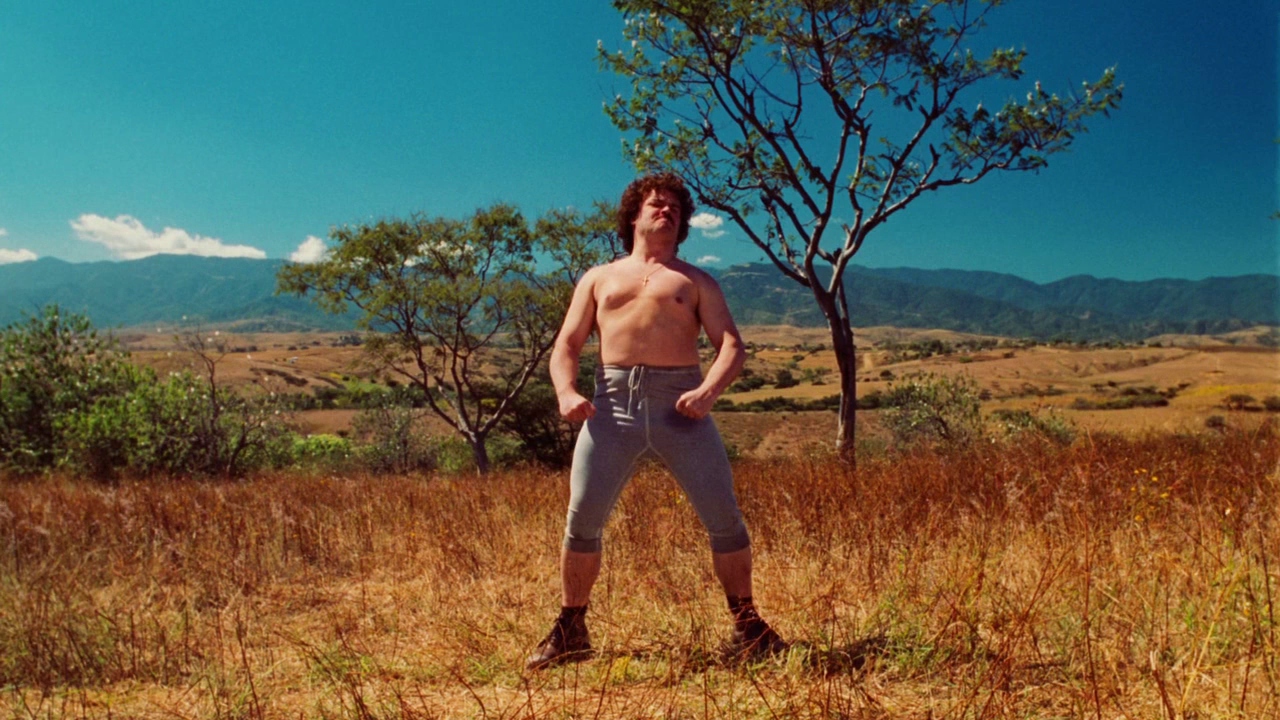
Nacho and Steven are poor wrestlers and lose every fight, but the crowd enjoys watching them anyways. With their modest winnings, Nacho can provide fresh food for the orphans and is even able to pick up some fancy new fits for himself. Unfortunately, the money and pride start to get to Nacho’s head, and he loses sight of why he became a luchador in the first place. All he wants is to win, and when he tries to impress the manager of star luchador Ramses at a party, Nacho forgets to buy groceries for the orphans. Sister Encarnación gets angry with him for abandoning the orphans, and he reveals that he has been shirking his duties by attending wrestling matches. He asks her if fighting can ever be used for good, and she tells him that the only noble fighting is one that is done for others.
Her words inspire Nacho to try and win the Battle Jam match and bring home the prize money for the orphans. But he loses, and a fire accident reveals Nacho has been wearing his Nacho Libre costume beneath his robes; he leaves the church and breaks off his friendship with Steven. But the winner of the Battle Jam becomes injured, leaving him unable to fight Ramses. Steven finds Nacho roaming the fields outside the village in his self-imposed exile and tells him that as runner-up, the chance to fight Ramses is his. Nacho decides to go to the fight and fight honorably with the orphans’ welfare as his cause.
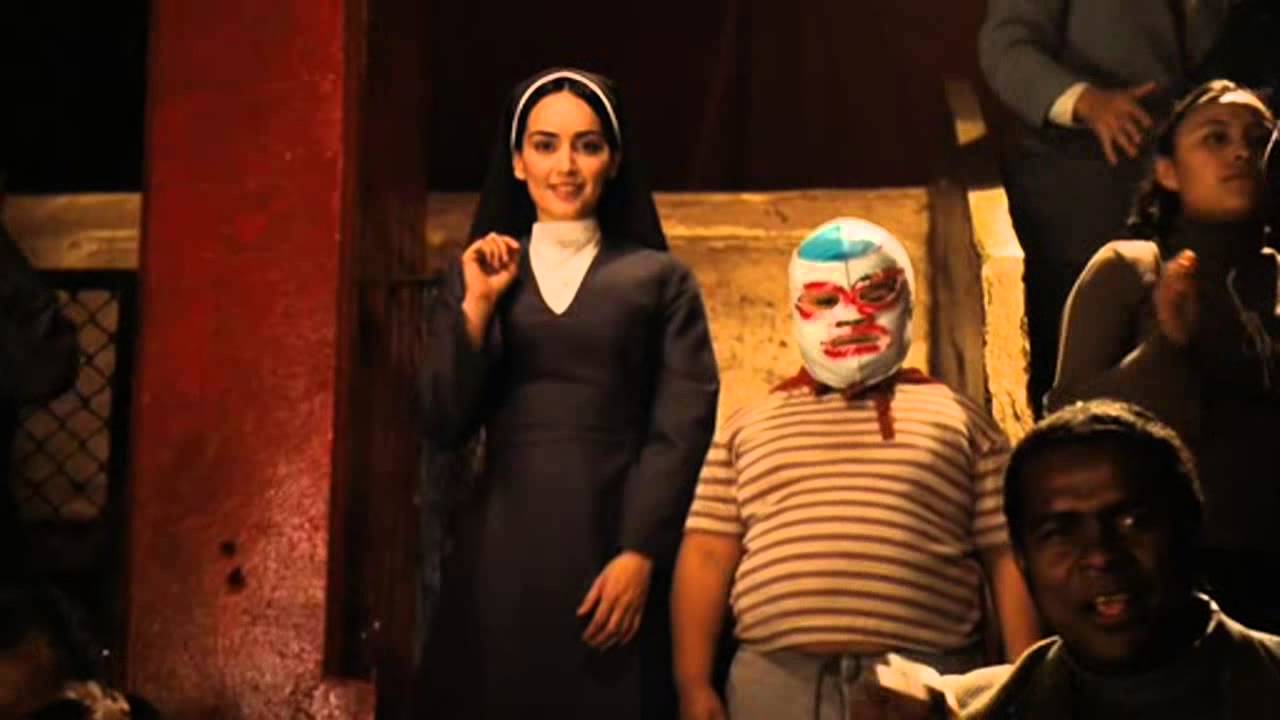
In a dramatic love-letter to Sister Encarnación, he tells her that he is taking her advice about a noble fight. She brings the orphans to the match, and their presence helps Nacho defeat Ramses in the ring. With the money, Nacho is able to take the orphans on a field trip and provide for them more than ever before. Fans of comic books and superheroes might notice the similarities between the lucha libre plotline and superhero films. Nacho is an underdog outside of the ring who wants to help the orphans in his care, but his real job as a friar restricts him from doing so — hence why the mask and costume he wears as Nacho Libre are so important.
He is a more comedic, light-hearted Matt Murdock in that regard, who dresses up as Daredevil to carry out justice and help those his law firm cannot. Nacho’s concealed identity with the brightly-colored mask, spandex, and cape (he even calls the outfit his “stretchy pants”) even make him look like a superhero. The superhero elements are further emphasized by Nacho becoming a role model for young orphan Chancho, who he sees as a young version of himself. When Nacho fights, he fights for the orphans’ well-being and becomes an inspiring local hero in the process. There are several scenes, notably during Nacho’s first fight in his Nacho Libre costume and in the final match with Ramses, where the audience sees Nacho through Chancho’s eyes – this is when we truly see Nacho as a hero and role model.
The superhero will always fight for a noble cause like justice or to protect their community. Sister Encarnación’s belief that “if you fight for something noble, or someone who needs your help, only then will God bless you in battle” aligns perfectly with that sentiment. Her words inspire Nacho to fight for good again and even help him win the match against Ramses. Nacho thinks only of helping the orphans have a better life and impressing Encarnación, making him much like the heroes of Marvel and DC Comics.
An Elevated Children’s Film
Nacho Libre, like many popular children’s films, relies on physical comedy to get laughs from its juvenile audience. The film has no shortage of stunts, injuries, or body excretions to amuse its target audience, particularly in the lucha libre. Wrestling is hyper-visual and physical through its spangly costumes, larger-than-life personas, and violent, theatrical moves; using wrestling as a source of comedy makes perfect sense for Hess’ movie. It’s hard to imagine that Nacho could conceal his identity and win money for the orphans as a futbol star. During a training montage earlier in the film, Nacho and Steven run each other through the physical ringer to prepare for their match that evening, and whacky stunts soon follow. Nacho lets his chest get hit with a cantaloupe, Steven covers his eyes with cow dung as he tries to doge fake arrows, and Nacho even jumps into the bullpen and gets catapulted by a bull while running from its horns. Hess uses many of these montages throughout the film to show a succession of ridiculous, comedic scenes of Nacho and Steven training or fighting.
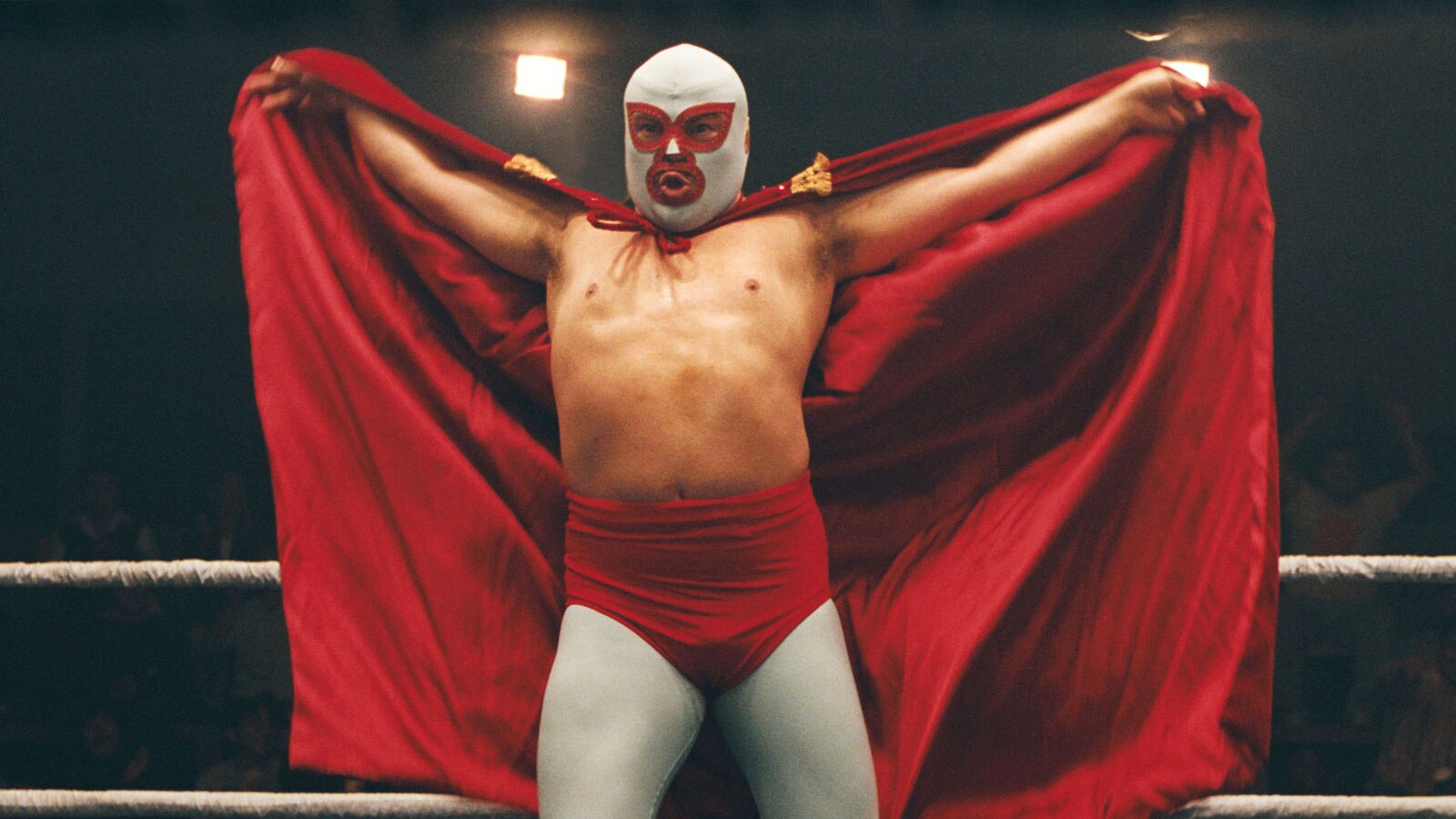
But what makes the film comedic and appealing to its older audience members are the scenes when Nacho’s midlife/identity crisis comes to a head. These scenes, like when Steven and Nacho stage an unsuccessful fight to impress Encarnación, are relatable to the non-adolescent viewer because of their situational, adult-life comedy feel. In a scene remarkably similar to asking for a promotion at work, Nacho disguises himself as a musician to ask Ramses’ manager about going pro at an exclusive wrestlers-only party. He even has a moment where he realizes what his life’s purpose in a prayer about “becoming a wrestling servant of You,” where he talks to God in a delightfully funny, conversational tone. The film effortlessly weaves the elements of physical comedy and the more situational, adult-life comedy together to make a hilariously relatable film for both the kids and parents watching.
The elevation of Nacho Libre from children’s film to mature indie comedy doesn’t end with jokes that appeal to audience members who have gone through midlife or identity crises, though. Hess borrows from Wes Anderson’s iconic storybook-style shots for his opening credits sequence and his montages, making Nacho Libre visually resemble a graphic novel or children’s picture book. What could have been a children’s film full of slapstick physical comedy and campy dialogue is made mature through the elaborate direct-facing shots that expand upon the setting and function as narrative transitions. The indie element of this cinematographic trick not just elevates the film by calling attention to its details and themes, but also emphasizes its status as a children’s film with superhero elements.
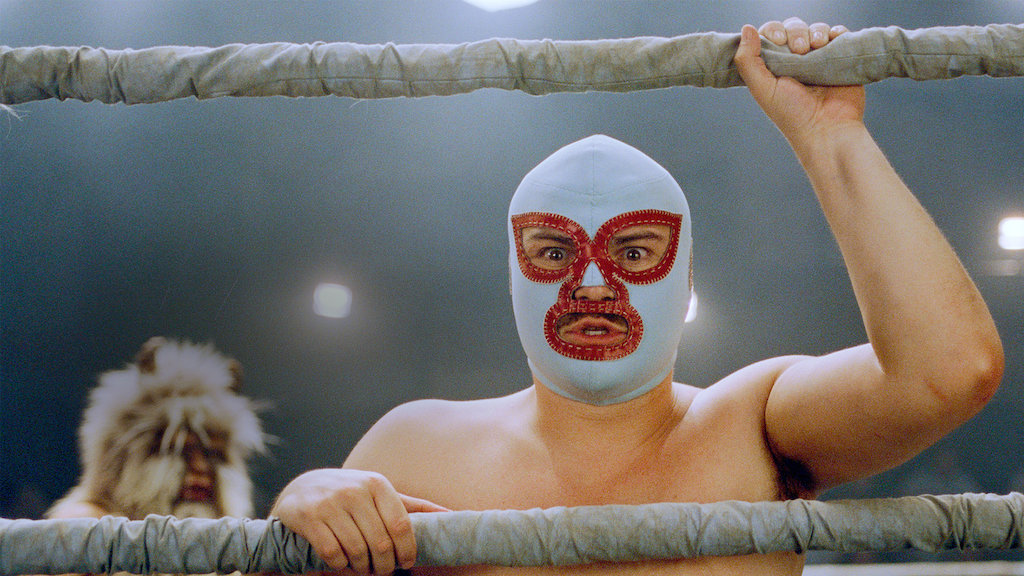
In the opening credits, audiences are introduced to a young Nacho in one of these Wes Anderson-style montages. While Mr. Loco’s “A Real Religious Man” plays, the camera is held static on the “picture:” a drawer with the Bible and luchador action figures with Nacho’s hand reaching for a drawing of his Nacho Libre costume; the camera lingers on Nacho’s childish illustration, which he opens up to show the audience for a few seconds before it transitions to the next “picture.” A nun is asleep in a rocking chair with the TV on, and Nacho stealing a bright blue doily to make his costume. A headstone decorated with old candles and roses, with Nacho gingerly reaching to swipe the flowers, knocking the vase over in the process. A rosary hangs from a hook, with Nacho breaking it when he pulls it down.
Finally, we see Nacho’s cape and costume laid out — with a cross placed prominently in the center — and the young boy dressed up in his fantasy luchador getup before being chastised by the friars. In this gorgeous opening sequence, the audience learns that Nacho is both dedicated to God, but is also a little rebellious by nature — and as the song suggests, he is a “real religious man” who will ultimately become a luchador for a good cause: to help the orphans that he once was. This opening sequence lets the audience know that this isn’t just a children’s film: it’s a mature, thoughtful film that uses indie movie-making tricks to tell the story of a man struggling with his conflicting identities.
Growing Up With Its Audience
Sister Encarnación’s charge for Nacho to fight as a nobleman for the good of others is uplifting to both its juvenile audience who need meaningful role models and to its mature, adult audience looking for a purpose in their personal lives. The orphans at Nacho’s monastery are featured prominently throughout the film, allowing the younger audience narrative space to see themselves reflected. Chancho especially is the child viewer’s surrogate, and he finds a role model in Nacho/Nacho Libre — further inspiring children to look for a trusted adult figure in their lives. But watching Nacho embrace both his friar and luchador identities in the midst of his midlife crisis gives its older audience a role model, too – Nacho becoming a local hero who gives back to his community is similarly heartwarming and uplifting.
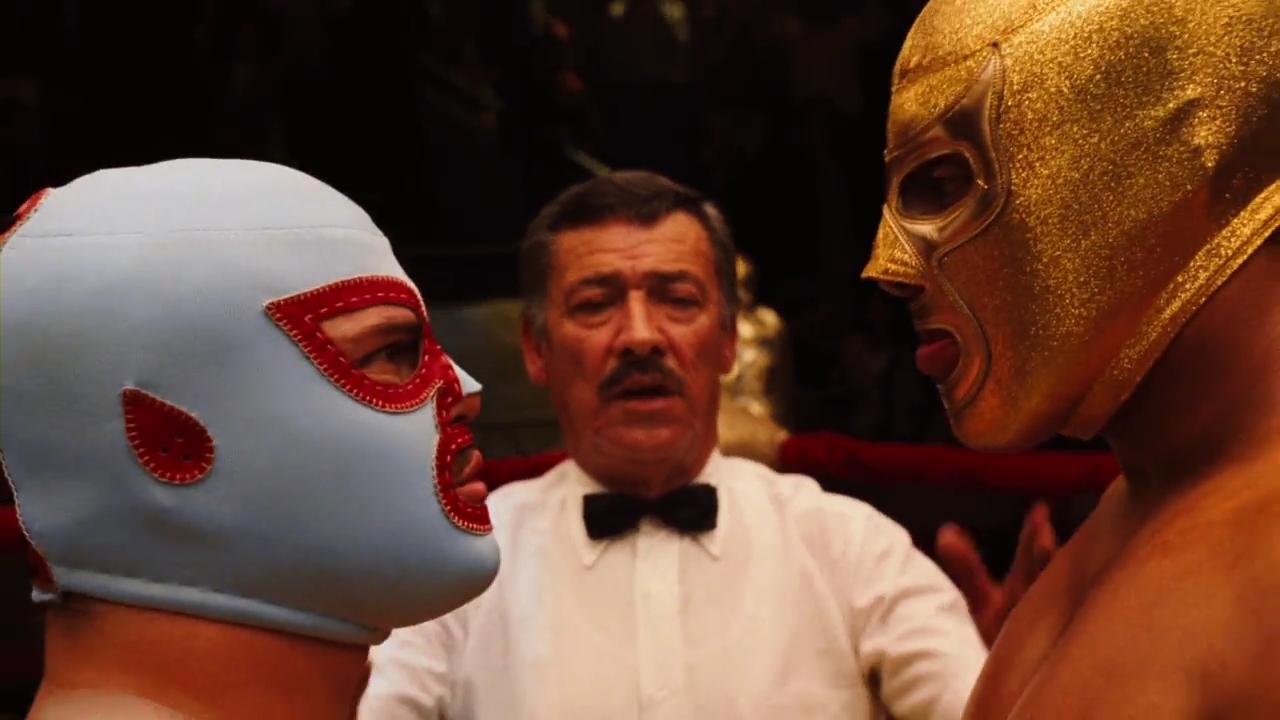
Nacho Libre parallels the stories of an inspiring everyman who becomes a luchador to help the children in his community and a man discovering his true identity — making the film one for all ages. It is more than just a children’s film full of lucha libre-related physical humor. And it is a comedy for audiences of all ages in its heartwarming portrayal of Nacho’s personal growth and heroic efforts in providing for his community. He is the underdog who becomes the hero, which appeals to audiences of all ages and backgrounds.
